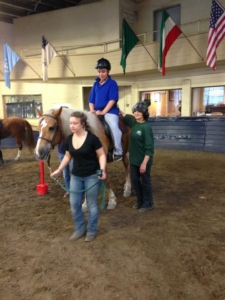Click the picture for the full July 2016 newsletter!
Many people assume that therapeutic riding and hippotherapy are the same thing. While they share many qualities and are similar, there are also some key differences that separate them. Both share the use of horses, and also the use of a horse leader and sidewalkers for the safety and to assist the rider.
Hippotherapy is a tool that is used in coordination with the therapy being given; occupational, physical, or speech therapy. The word has origins in both the Greek and English languages. The “hippo” part comes from the Greek word for horse, “hippos”, and the “therapy” part has an English origin. Hippotherapy is primarily what we use here at Rocking Horse Rehab. It can be used to treat a large group of people, including disorders and disabilities from Autism to Cerebral Palsy, and from Low tone to Apraxia. The tack typically used for hippotherapy is a thin pad on the horse’s back in order to maximize the child’s input from the horse’s movement. More information on hippotherapy can be found at http://www.americanhippotherapyassociation.org/.
Therapeutic riding is considered a recreational activity, and teaches riding skills to people with a variety of disabilities. TR is typically used for children that are more high-functioning, with disorders and disabilities such as Down Syndrome, Autism, and learning disabilities. Therapeutic riding began in Europe in the late 1960’s, and quickly became popular in the United States and Canada. The tack for TR is usually more typical tack that would be used in standard lessons for typical children, such as an English or Western saddle, and sometimes reins are used as well. More information on therapeutic riding can be found at http://www.pathintl.org/


